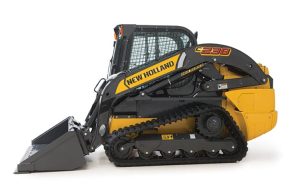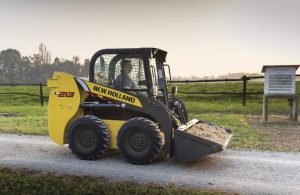Track Loader Maintenance From The Professionals
If you’ve worked around track loaders for a long time, you’re probably pretty savvy when it comes to track loader maintenance. You know what details matter most to keep your New Holland machine working smoothly with as little downtime as possible. But even veterans appreciate insights from others in the know. And if you’re new to the business, you can use all the inside advice you can get.
So what do industry professionals have to say about maintaining compact track loaders? We’ve pulled together tips from product managers at New Holland and several other manufacturers. Read on to find out how you can get the greatest productivity from your machine and get the greatest return on your considerable investment.
Protecting the undercarriage is critical
 If the tracks aren‘t working perfectly, the loader cannot do its job. It’s as simple as that. Our experts noted that undercarriage expenses represent the bulk of maintenance costs for track loaders.
If the tracks aren‘t working perfectly, the loader cannot do its job. It’s as simple as that. Our experts noted that undercarriage expenses represent the bulk of maintenance costs for track loaders.
Not too tight, not too loose
One thing the pros all agree on is the importance of track tensioning. They say poor tensioning is the single-most common cause of undercarriage problems. Just as over- or under-inflating tires can cause performance and wear problems, improper tension will cause premature track wear and diminished performance. It can also shorten the life expectancy of surrounding components including idler wheels, mid wheels, bearings and seals.
Why? Too much tension accelerates wear on the bearings, rollers, and sprockets. The machine has to work so hard to turn the over-tensioned track, you can lose as much as 15% of your fuel efficiency. Too little tension accelerates wear on the tracks and all their associated components. Track loaders can actually lose their tracks in mid-operation.
What to do:
Add track tension to your regular preventive maintenance checklist, and check it weekly.
Cleanliness matters

This may seem obvious, but it’s easy to overlook or deliberately skip “extraneous” tasks when the jobsite is busy. Nonetheless, the time investment required to keep things clean will be easily repaid in longer track and component life.
What to do:
Clear a path for your loader to protect the tracks from damage, by filling bumps or curbs with gravel and by removing debris such as concrete chunks, rebar, etc.
Inspect the undercarriage every day, especially around the sprockets and between the roller and idler wheels, because it’s easy for material to build up in those spaces. Regular cleaning will protect undercarriage component seals and bearings and moving parts from premature wear.
Grease is the word
Does the suspension systems in your compact track loader include front and rear torsion axles? These must be greased every day to maximize load retention, reduce shock and vibration, and ensure a comfortable ride for the operator.
Get more life from parts before replacement
We all know that parts wear out, our goal is to help them last as long as possible without sacrificing performance. On loaders that have a rubber-track undercarriage, the track itself and the drive sprocket components see the most action so they are the most commonly replaced items. Roller wheels will eventually wear out and require replacement as well.
What to watch for
When it’s time to replace the track, look to see if sprockets also need replacement. The teeth wear on one side during forward movement and on the other side in reverse, but once you detect wear you can extend the life of drive sprockets by swapping them from one side of the machine to the other. It’s essentially the same as rotating the tires on your car.
Don’t ignore your maintenance schedule
If you follow these maintenance tips from the professionals, your New Holland track loader will last longer and save you money on service and future repairs. The key is sticking to your planned maintenance schedule, even when you’re busy. Preventive maintenance is always faster and less expensive than letting things go.
